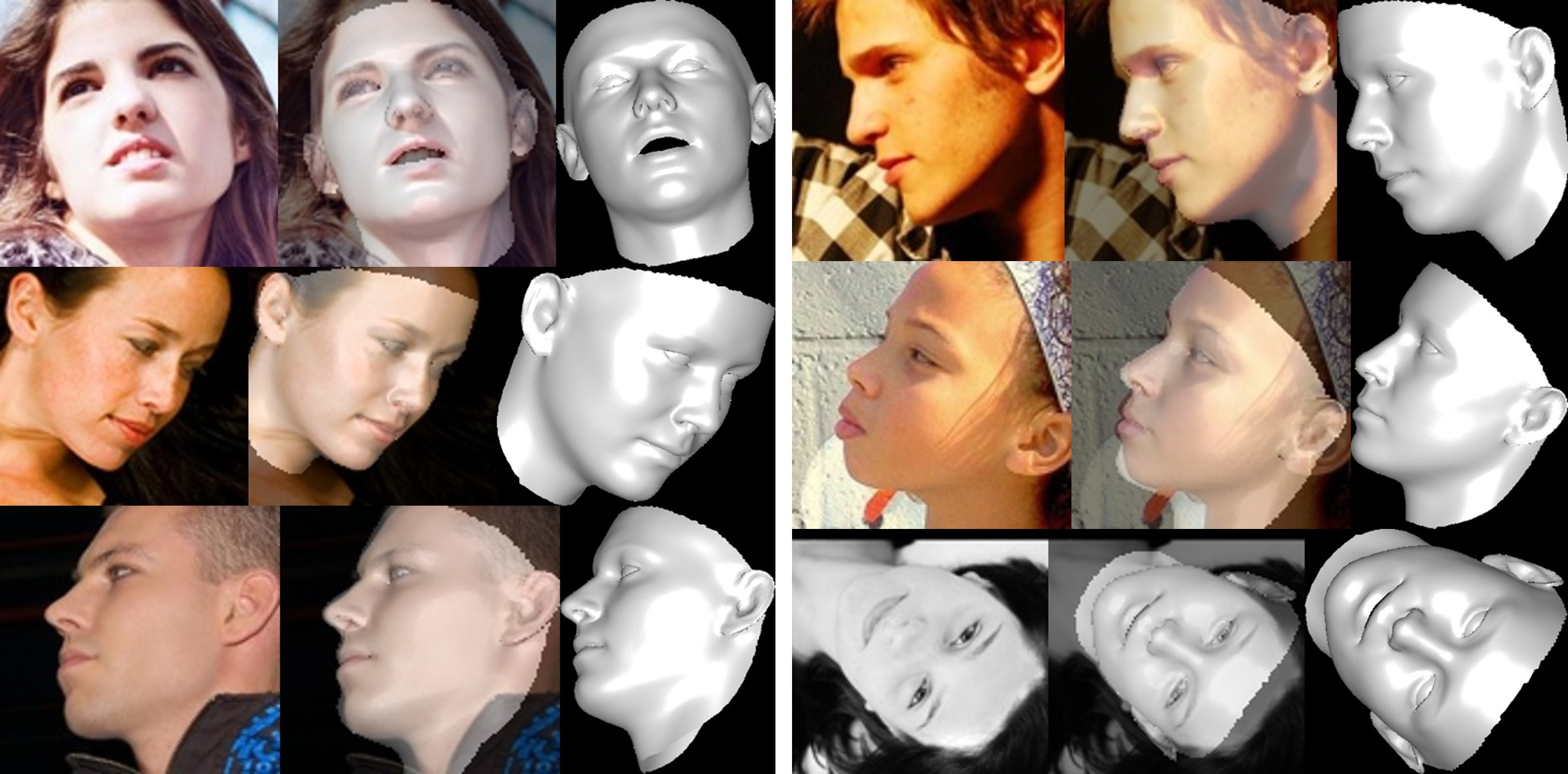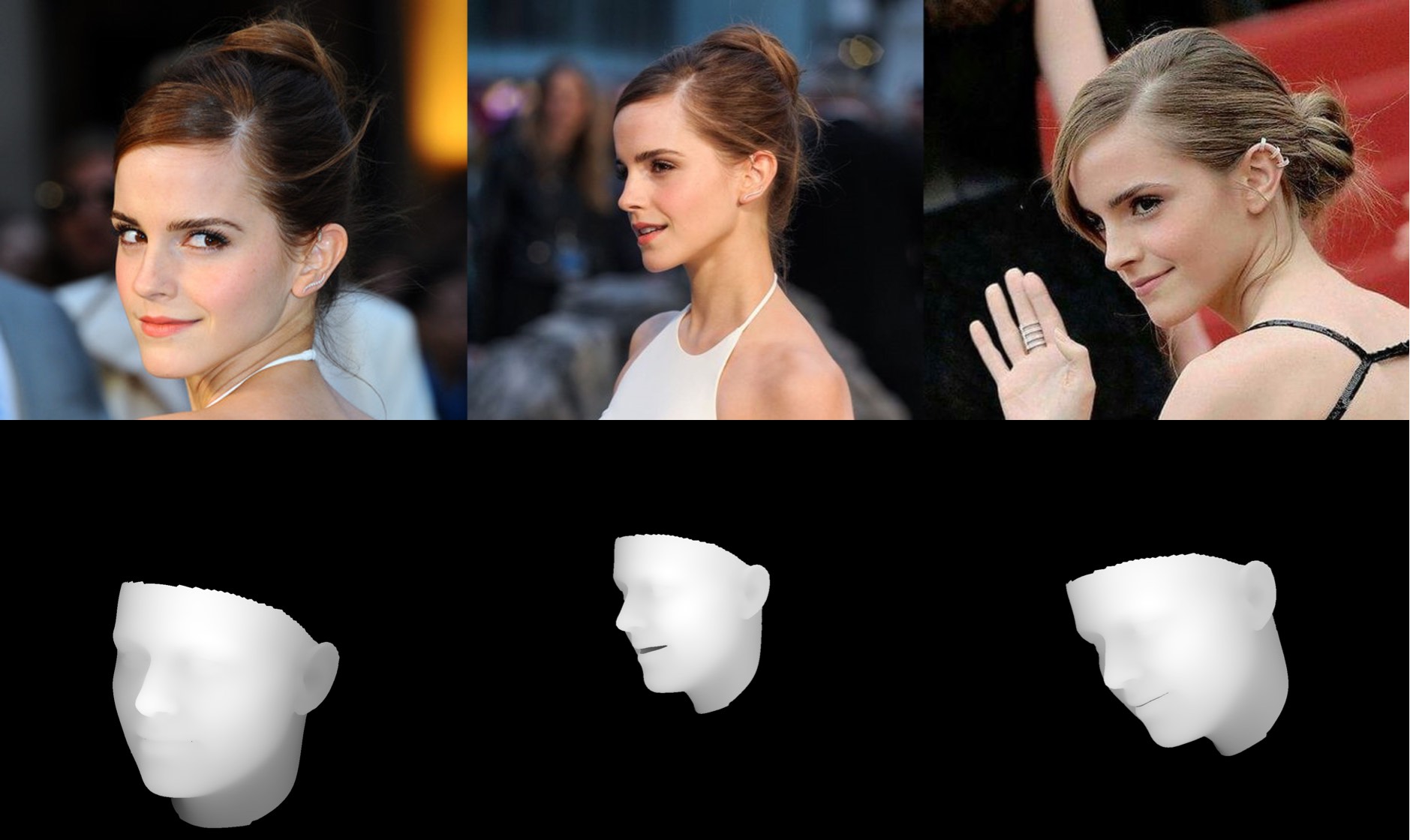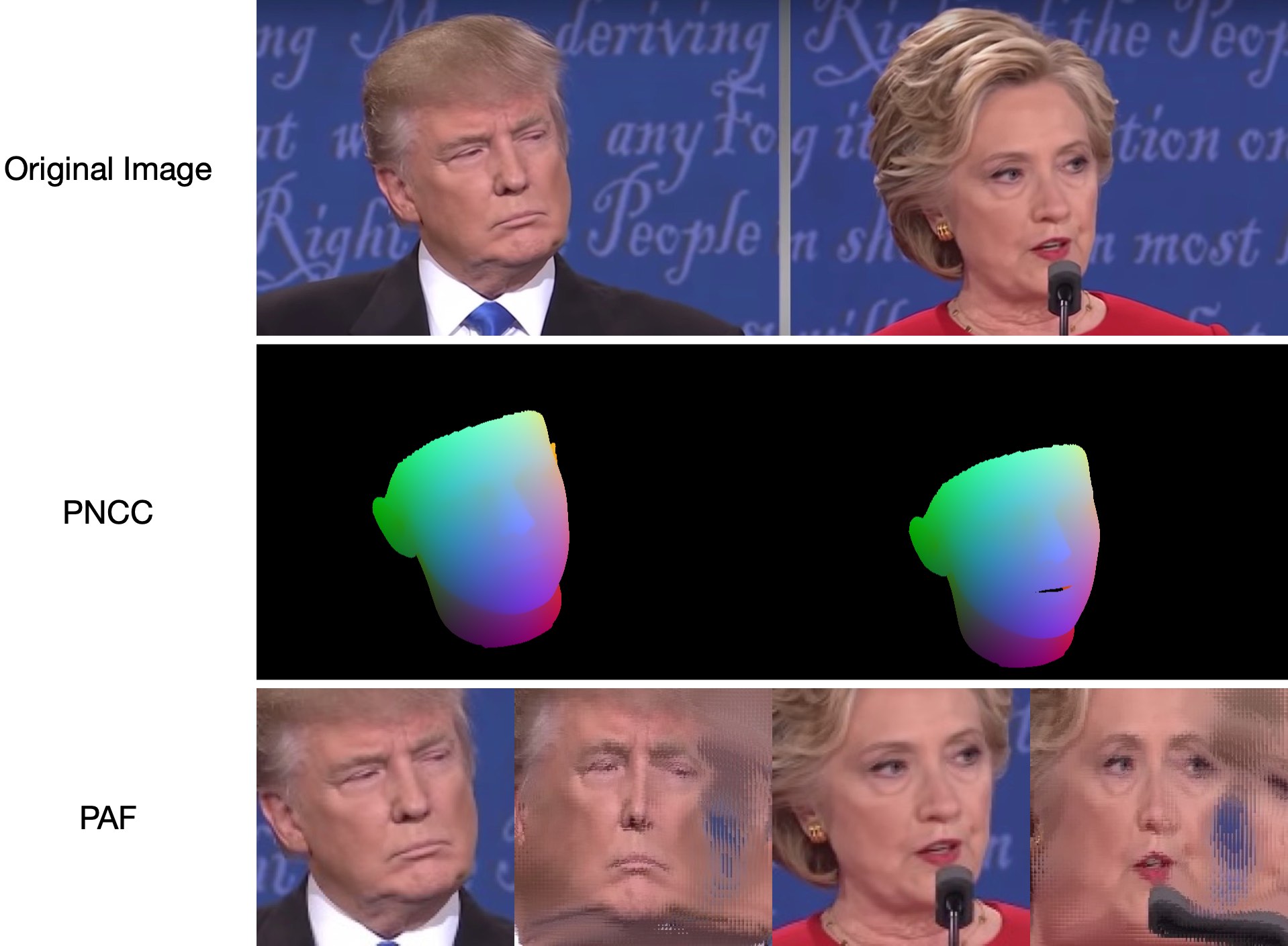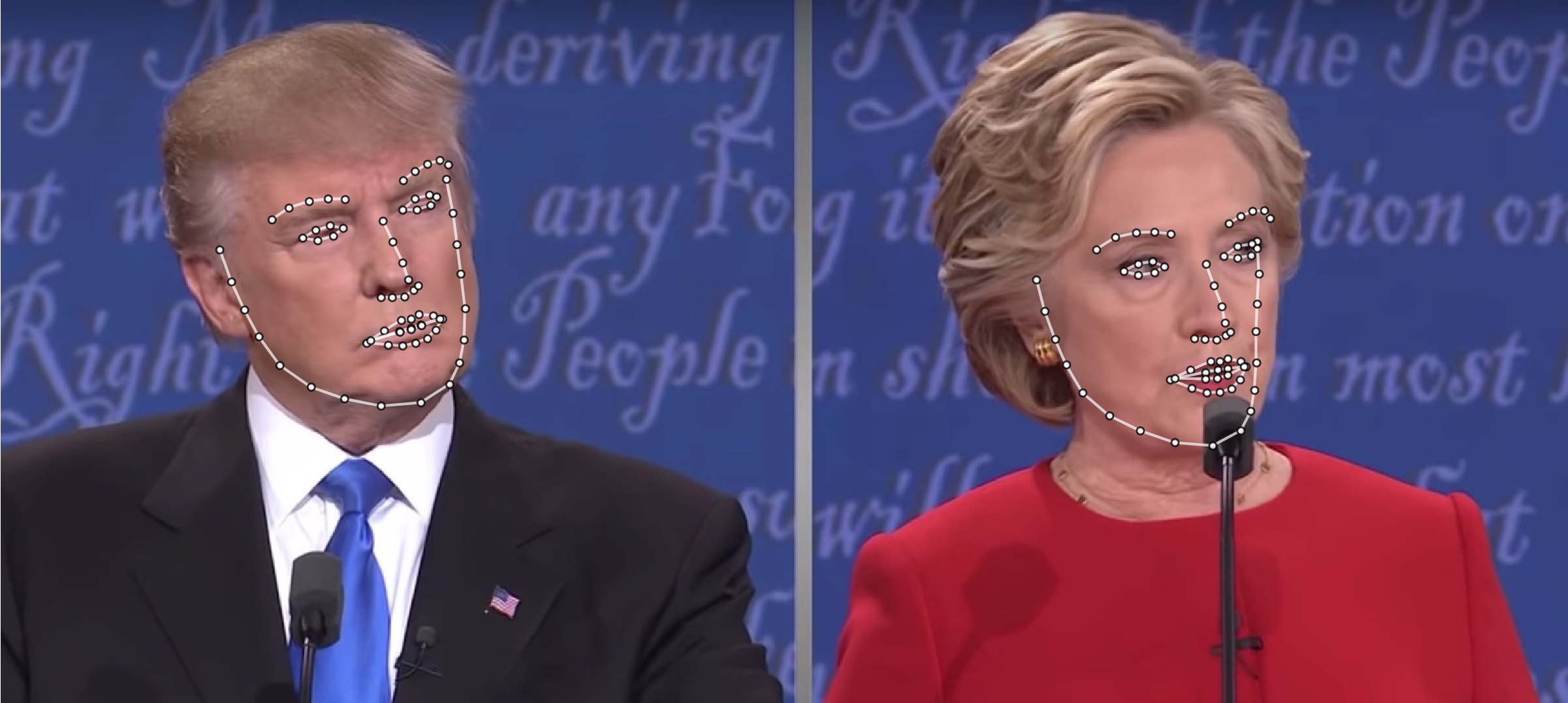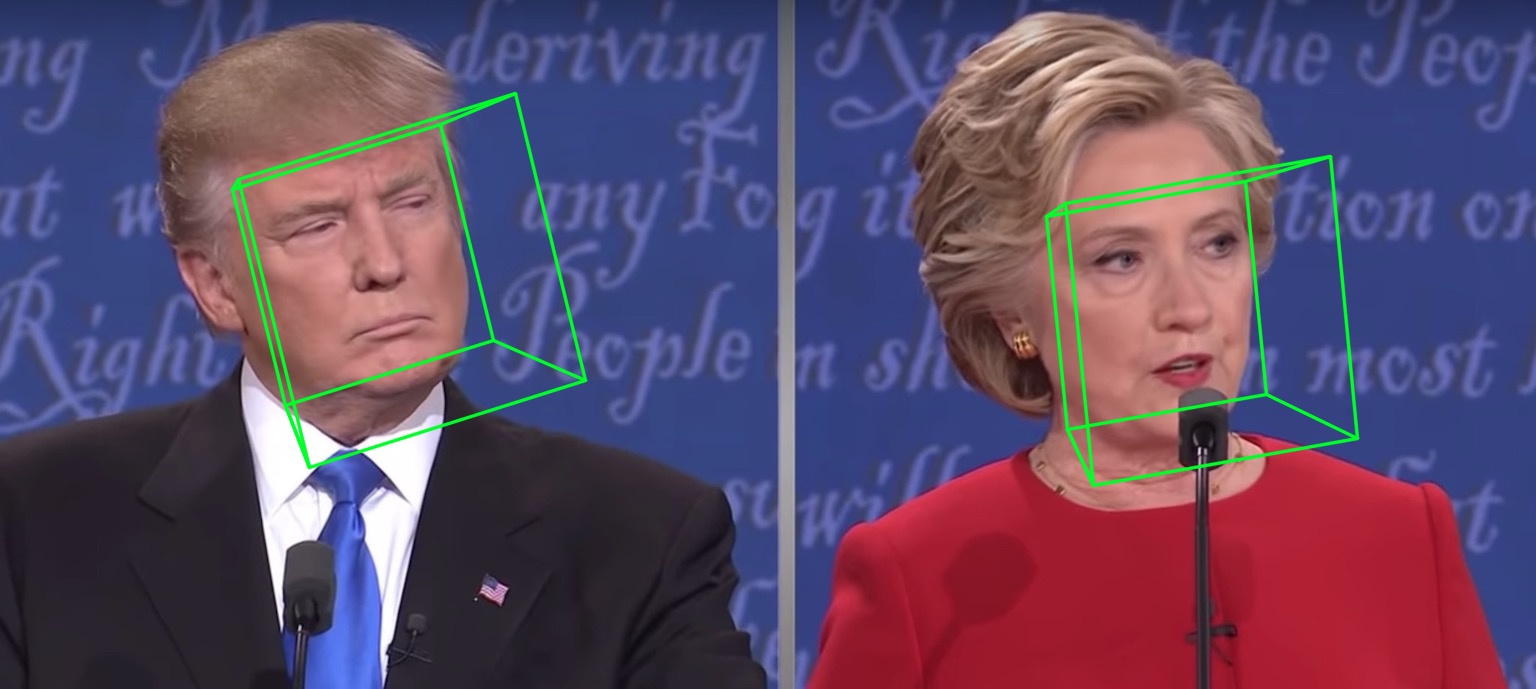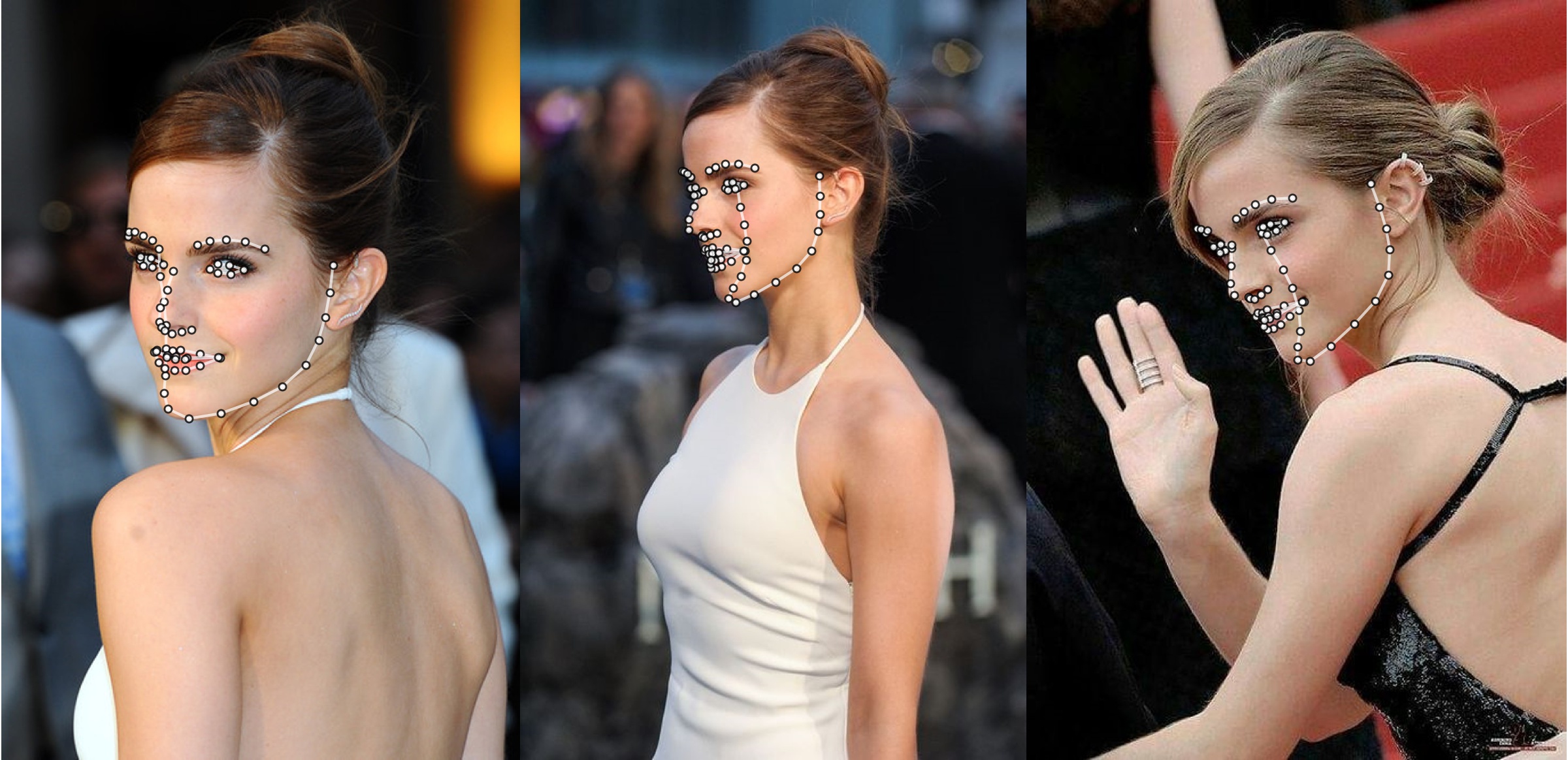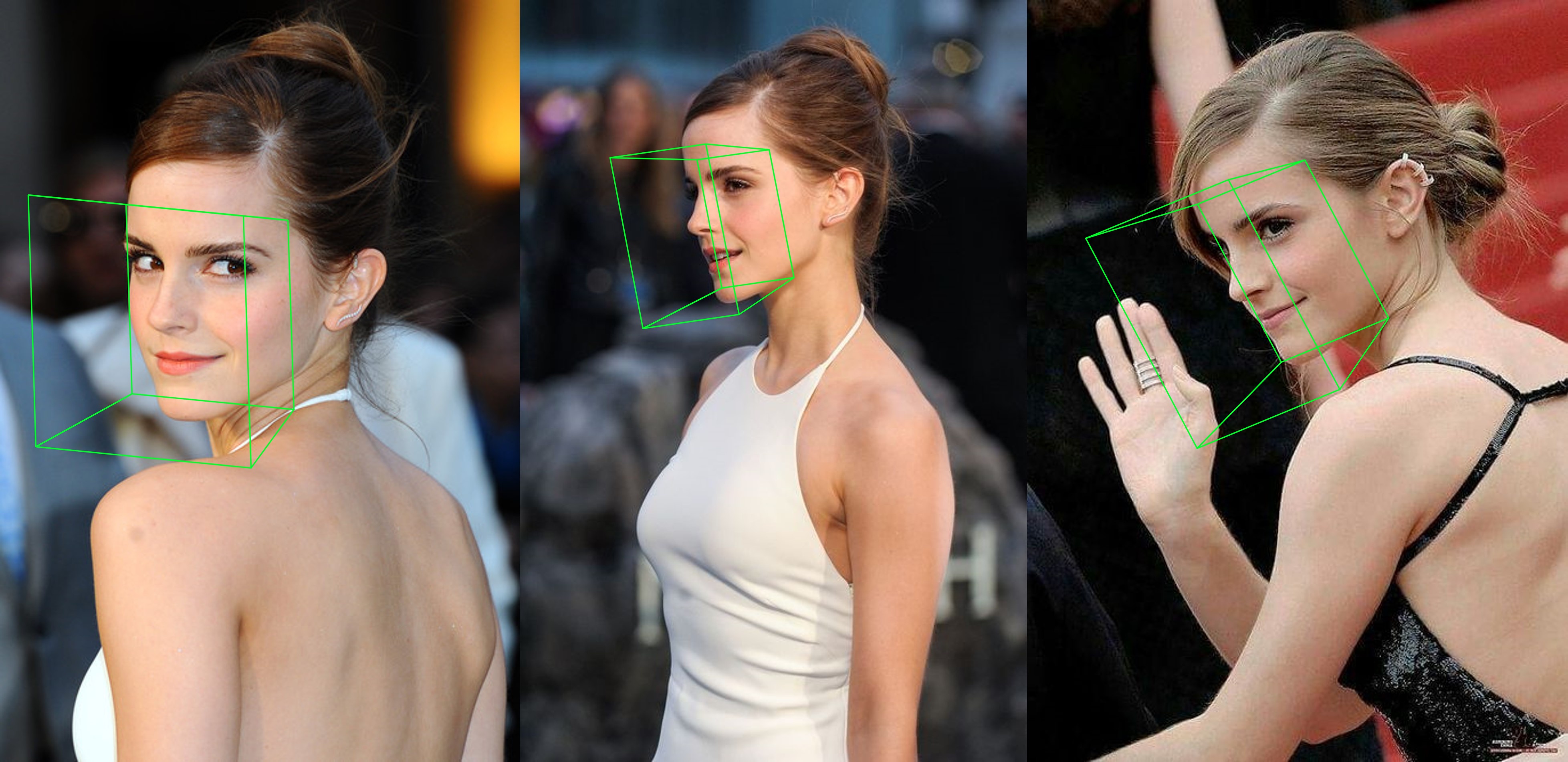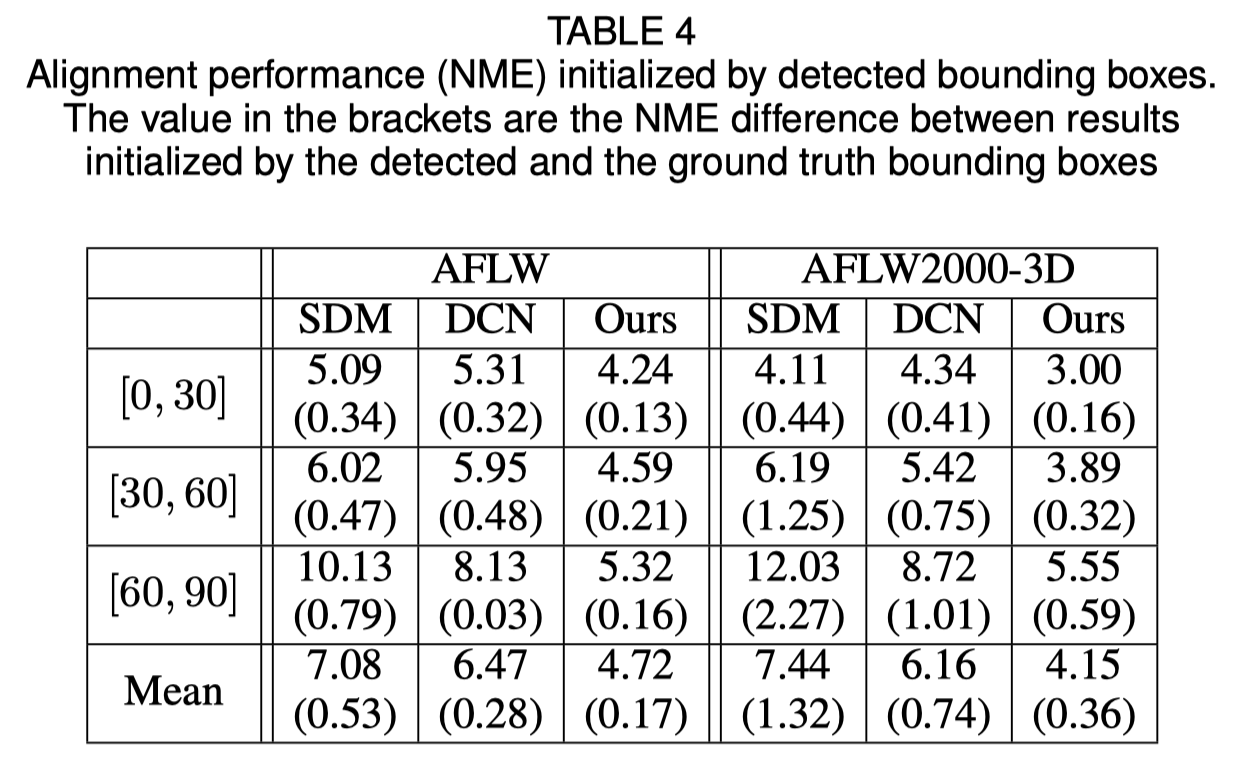By Jianzhu Guo.
[Updates]
2020.8.30: The pre-trained model and code of ECCV-20 are made public on 3DDFA_V2, the copyright is explained by Jianzhu Guo and the CBSR group.2020.8.2: Update a simple c++ port of this project.2020.7.3: The extended work Towards Fast, Accurate and Stable 3D Dense Face Alignment is accepted by ECCV 2020. See my page for more details.2019.9.15: Some updates, see the commits for details.2019.6.17: Adding a video demo contributed by zjjMaiMai.2019.5.2: Evaluating inference speed on CPU with PyTorch v1.1.0, see here and speed_cpu.py.2019.4.27: A simple render pipline running at ~25ms/frame (720p), see rendering.py for more details.2019.4.24: Providing the demo building of obama, see demo@obama/readme.md for more details.2019.3.28: Some updates.2018.12.23: Add several features: depth image estimation, PNCC, PAF feature and obj serialization. Seedump_depth,dump_pncc,dump_paf,dump_objoptions for more details.2018.12.2: Support landmark-free face cropping, seedlib_landmarkoption.2018.12.1: Refine code and add pose estimation feature, see utils/estimate_pose.py for more details.2018.11.17: Refine code and map the 3d vertex to original image space.2018.11.11: Update end-to-end inference pipeline: infer/serialize 3D face shape and 68 landmarks given one arbitrary image, please see readme.md below for more details.2018.10.4: Add Matlab face mesh rendering demo in visualize.2018.9.9: Add pre-process of face cropping in benchmark.
[Todo]
- Add c++ port.
- Depth image estimation.
- PNCC (Projected Normalized Coordinate Code).
- PAF (Pose Adaptive Feature).
- Obj serialization with sampled texture.
- Recommendation of fast face detectors: FaceBoxes.PyTorch, libfacedetection, ZQCNN
- Training details
- Face Profiling: Official Matlab code
This repo holds the pytorch improved version of the paper: Face Alignment in Full Pose Range: A 3D Total Solution. Several works beyond the original paper are added, including the real-time training, training strategies. Therefore, this repo is an improved version of the original work. As far, this repo releases the pre-trained first-stage pytorch models of MobileNet-V1 structure, the pre-processed training&testing dataset and codebase. Note that the inference time is about 0.27ms per image (input batch with 128 images as an input batch) on GeForce GTX TITAN X.
This repo will keep updating in my spare time, and any meaningful issues and PR are welcomed.
Several results on ALFW-2000 dataset (inferenced from model phase1_wpdc_vdc.pth.tar) are shown below.
- PyTorch >= 0.4.1 (PyTorch v1.1.0 is tested successfully on macOS and Linux.)
- Python >= 3.6 (Numpy, Scipy, Matplotlib)
- Dlib (Dlib is optionally for face and landmarks detection. There is no need to use Dlib if you can provide face bouding bbox and landmarks. Besides, you can try the two-step inference strategy without initialized landmarks.)
- OpenCV (Python version, for image IO opertations.)
- Cython (For accelerating depth and PNCC render.)
- Platform: Linux or macOS (Windows is not tested.)
# installation structions
sudo pip3 install torch torchvision # for cpu version. more option to see https://pytorch.org
sudo pip3 install numpy scipy matplotlib
sudo pip3 install dlib==19.5.0 # 19.15+ version may cause conflict with pytorch in Linux, this may take several minutes. If 19.5 version raises errors, you may try 19.15+ version.
sudo pip3 install opencv-python
sudo pip3 install cython
In addition, I strongly recommend using Python3.6+ instead of older version for its better design.
-
Clone this repo (this may take some time as it is a little big)
git clone https://github.com/cleardusk/3DDFA.git # or git@github.com:cleardusk/3DDFA.git cd 3DDFAThen, download dlib landmark pre-trained model in Google Drive or Baidu Yun, and put it into
modelsdirectory. (To reduce this repo's size, I remove some large size binary files including this model, so you should download it : ) ) -
Build cython module (just one line for building)
cd utils/cython python3 setup.py build_ext -iThis is for accelerating depth estimation and PNCC render since Python is too slow in for loop.
-
Run the
main.pywith arbitrary image as inputpython3 main.py -f samples/test1.jpgIf you can see these output log in terminal, you run it successfully.
Dump tp samples/test1_0.ply Save 68 3d landmarks to samples/test1_0.txt Dump obj with sampled texture to samples/test1_0.obj Dump tp samples/test1_1.ply Save 68 3d landmarks to samples/test1_1.txt Dump obj with sampled texture to samples/test1_1.obj Dump to samples/test1_pose.jpg Dump to samples/test1_depth.png Dump to samples/test1_pncc.png Save visualization result to samples/test1_3DDFA.jpgBecause
test1.jpghas two faces, there are two.plyand.objfiles (can be rendered by Meshlab or Microsoft 3D Builder) predicted. Depth, PNCC, PAF and pose estimation are all set true by default. Please runpython3 main.py -hor review the code for more details.The 68 landmarks visualization result
samples/test1_3DDFA.jpgand pose estimation resultsamples/test1_pose.jpgare shown below:
-
Additional example
python3 ./main.py -f samples/emma_input.jpg --bbox_init=two --dlib_bbox=false
Just run
python3 speed_cpu.py
On my MBP (i5-8259U CPU @ 2.30GHz on 13-inch MacBook Pro), based on PyTorch v1.1.0, with a single input, the running output is:
Inference speed: 14.50±0.11 ms
When input batch size is 128, the total inference time of MobileNet-V1 takes about 34.7ms. The average speed is about 0.27ms/pic.
The training scripts lie in training directory. The related resources are in below table.
| Data | Download Link | Description |
|---|---|---|
| train.configs | BaiduYun or Google Drive, 217M | The directory contraining 3DMM params and filelists of training dataset |
| train_aug_120x120.zip | BaiduYun or Google Drive, 2.15G | The cropped images of augmentation training dataset |
| test.data.zip | BaiduYun or Google Drive, 151M | The cropped images of AFLW and ALFW-2000-3D testset |
After preparing the training dataset and configuration files, go into training directory and run the bash scripts to train. train_wpdc.sh, train_vdc.sh and train_pdc.sh are examples of training scripts. After configuring the training and testing sets, just run them for training. Take train_wpdc.sh for example as below:
#!/usr/bin/env bash
LOG_ALIAS=$1
LOG_DIR="logs"
mkdir -p ${LOG_DIR}
LOG_FILE="${LOG_DIR}/${LOG_ALIAS}_`date +'%Y-%m-%d_%H:%M.%S'`.log"
#echo $LOG_FILE
./train.py --arch="mobilenet_1" \
--start-epoch=1 \
--loss=wpdc \
--snapshot="snapshot/phase1_wpdc" \
--param-fp-train='../train.configs/param_all_norm.pkl' \
--param-fp-val='../train.configs/param_all_norm_val.pkl' \
--warmup=5 \
--opt-style=resample \
--resample-num=132 \
--batch-size=512 \
--base-lr=0.02 \
--epochs=50 \
--milestones=30,40 \
--print-freq=50 \
--devices-id=0,1 \
--workers=8 \
--filelists-train="../train.configs/train_aug_120x120.list.train" \
--filelists-val="../train.configs/train_aug_120x120.list.val" \
--root="/path/to//train_aug_120x120" \
--log-file="${LOG_FILE}"
The specific training parameters are all presented in bash scripts, including learning rate, mibi-batch size, epochs and so on.
First, you should download the cropped testset ALFW and ALFW-2000-3D in test.data.zip, then unzip it and put it in the root directory.
Next, run the benchmark code by providing trained model path.
I have already provided five pre-trained models in models directory (seen in below table). These models are trained using different loss in the first stage. The model size is about 13M due to the high efficiency of MobileNet-V1 structure.
python3 ./benchmark.py -c models/phase1_wpdc_vdc.pth.tar
The performances of pre-trained models are shown below. In the first stage, the effectiveness of different loss is in order: WPDC > VDC > PDC. While the strategy using VDC to finetune WPDC achieves the best result.
| Model | AFLW (21 pts) | AFLW 2000-3D (68 pts) | Download Link |
|---|---|---|---|
| phase1_pdc.pth.tar | 6.956±0.981 | 5.644±1.323 | Baidu Yun or Google Drive |
| phase1_vdc.pth.tar | 6.717±0.924 | 5.030±1.044 | Baidu Yun or Google Drive |
| phase1_wpdc.pth.tar | 6.348±0.929 | 4.759±0.996 | Baidu Yun or Google Drive |
| phase1_wpdc_vdc.pth.tar | 5.401±0.754 | 4.252±0.976 | In this repo. |
Believe me that the framework of this repo can achieve better performance than PRNet without increasing any computation budget. Related work is under review and code will be released upon acceptance.
-
Face bounding box initialization
The original paper shows that using detected bounding box instead of ground truth box will cause a little performance drop. Thus the current face cropping method is robustest. Quantitative results are shown in below table.
-
Face reconstruction
The texture of non-visible area is distorted due to self-occlusion, therefore the non-visible face region may appear strange (a little horrible).
-
About shape and expression parameters clipping
The parameters clipping accelerates the training and reconstruction, but degrades the accuracy especially the details like closing eyes. Below is an image, with parameters dimension 40+10, 60+29 and 199+29 (the original one). Compared to shape, expression clipping has more effect on reconstruction accuracy when emotion is involved. Therefore, you can choose a tradeoff between the speed/parameter-size and the accuracy. A recommendation of clipping trade-off is 60+29.
Thanks for your interest in this repo. If your work or research benefits from this repo, star it 😃
Welcome to focus on my 3D face related works: MeGlass and Face Anti-Spoofing.
If your work benefits from this repo, please cite three bibs below.
@misc{3ddfa_cleardusk,
author = {Guo, Jianzhu and Zhu, Xiangyu and Lei, Zhen},
title = {3DDFA},
howpublished = {\url{https://github.com/cleardusk/3DDFA}},
year = {2018}
}
@inproceedings{guo2020towards,
title= {Towards Fast, Accurate and Stable 3D Dense Face Alignment},
author= {Guo, Jianzhu and Zhu, Xiangyu and Yang, Yang and Yang, Fan and Lei, Zhen and Li, Stan Z},
booktitle= {Proceedings of the European Conference on Computer Vision (ECCV)},
year= {2020}
}
@article{zhu2017face,
title= {Face alignment in full pose range: A 3d total solution},
author= {Zhu, Xiangyu and Liu, Xiaoming and Lei, Zhen and Li, Stan Z},
journal= {IEEE transactions on pattern analysis and machine intelligence},
year= {2017},
publisher= {IEEE}
}
Jianzhu Guo (郭建珠) [Homepage, Google Scholar]: jianzhu.guo@nlpr.ia.ac.cn or guojianzhu1994@foxmail.com.






